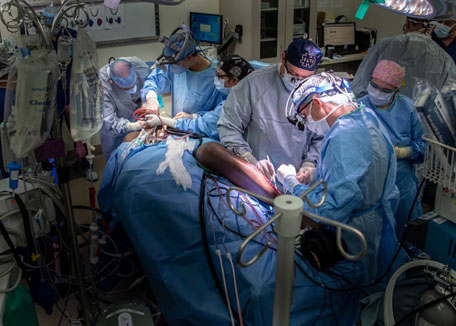Researchers examined the outcomes of surgical reconstructive methods to restore eyelid function and reflexes after significant damage to the face.
In the military and civilian populations, there are catastrophic blast incidents that occur both intentionally from terrorists or accidental industrial events, such as the explosion in Beirut, Lebanon, in 2020, but the threats posed by blast remain an important area of concern. Blast injuries that affect the face can lead to debilitating symptoms such as the inability to close eyelids (risking further injury to the eye) and limiting or eliminating the ability to blink correctly. An imperative, functional component of facial reconstruction is to restore the functionality of the eyelid after paralysis resulting from significant damage due to ballistic or blast injury to the face. There are many surgical methods to restore eyelid function and spontaneous blink reflexes. In this study, a team of researchers followed and documented the surgical outcomes of a 45-year old man who previously endured multi-staged reconstructive surgeries due to a gunshot wound to the right side of the face. In addition to this case study, the researchers conducted a literature review of the traditional methods and current techniques (e.g., cross-facial nerve graft) used to restore eyelid functionality after facial paralysis, and used those findings to further explore the acute and chronic effects of grafting surgery.
To restore eyelid functionality, the patient underwent a cross-facial nerve graft from the left side of the face to the right eyelid. At the initial postoperative evaluation, the patient could close his right eye with minimal residual lagophthalmos (i.e., where the eyelid does not close fully). At the 3-month follow-up, he demonstrated a stronger blinking reflex. At the 1-year follow-up, the patient exhibited the ability to blink his upper and lower eyelids individually or in synchronization with minimal eye closure issues. Although the strength of the restored eyelid was stronger than the previous follow-up examinations, it was still weaker compared to the normal left eyelid blink strength. However, the patient did not need to use any eye drop medication for dry eye irritation. Further reconstruction for soft tissue augmentation and contouring with fat grafting was offered, but declined. The patient was pleased with his reconstruction and blink restoration.
This case study found that leveraging the cross-facial nerve graft method could restore functionality to the eyelid after severe soft tissue and bony damage resulting from penetrating or blast wounds. Although the team restored spontaneous and synchronized eyelid function, the researchers reported that there is a risk of direct neurotization (i.e., leveraging nerve transfer to reestablish a neural pathway) failure that could affect the eyelid position or spontaneous blink reflex, leading to more invasive surgeries. While these complications may occur, the researchers recommended using cross-facial nerve graft in the appropriate patient population. Given the complex nature of these blast injuries in both civilians and Service members, researchers must continue to pursue reconstructive surgeries that restore function and improve upon these techniques to reduce disfigurement.

Hart, J., Gupta, R., & Chaiyasate, K. (2022). Eyelid Reanimation with Free Platysma Graft: Final Stage of Reconstruction after Gunshot Wound to Face. Plastic and Reconstructive Surgery Global Open, 10(6).
The authors have no financial interest to declare in relation to the content of the article.
Your 15 minute session will timeout in approximately 10 minutes.
If you're in the middle of entering information, please close this warning and save your progress (if possible) or finish up your task.
If your session fully times out, you will lose any un-saved work.
Your current Blast Injury Research Program session has expired.
Your next click will take you away from the private area, and you will lose any work you have in-progress.
Please enter your email address, and try again.